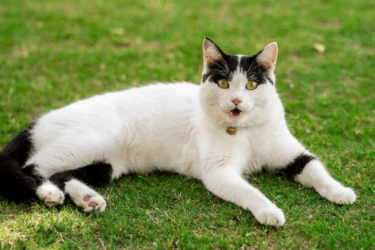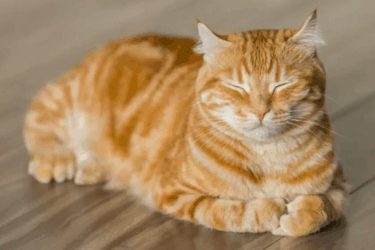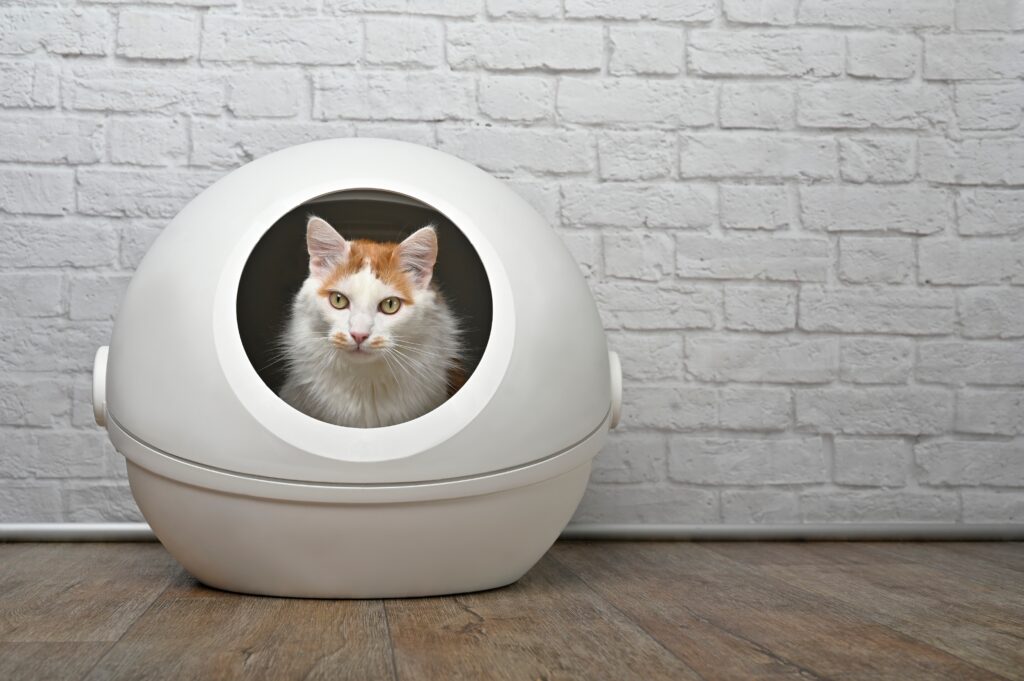
If your cat pees or sprays in the house, there is something wrong with the litter box. Or your cat is ill or stressed. Here we tell you how to solve the problem of nondomesticity in cats and give useful tips about the litter box.
Your cat pees in the house
Healthy cats always pee in the litter box or outside. So if your cat pees in the house or next to the litter box, it is not for nothing. And there is something wrong:
- Your cat has a medical problem
- Your cat has a behavioural problem
- Something is wrong with the litter box
Please note: you can never teach your cat to be un-mindful by punishing it! A cat that urinates in the house is in pain or afraid. Above all, it needs help.
Medical reasons why your cat pees in the house
If your cat pees in the house, you should first go to your GP for an examination and advice. Because nine out of ten times urinating in the house is caused by a medical problem such as:
- Your cat has a cystitis
- Your cat has cystitis (struvite)
- Your cat has urinary tract problems
- Your cat has diabetes or its kidneys are not working properly
- Your cat is older, has painful joints and therefore does not find it easy to use the litter tray (the step is too high)
Does your cat urinate in the house? Then first go to the vet to rule out a medical cause. Is there nothing medical going on? Then your cat might also have a behavioural problem.
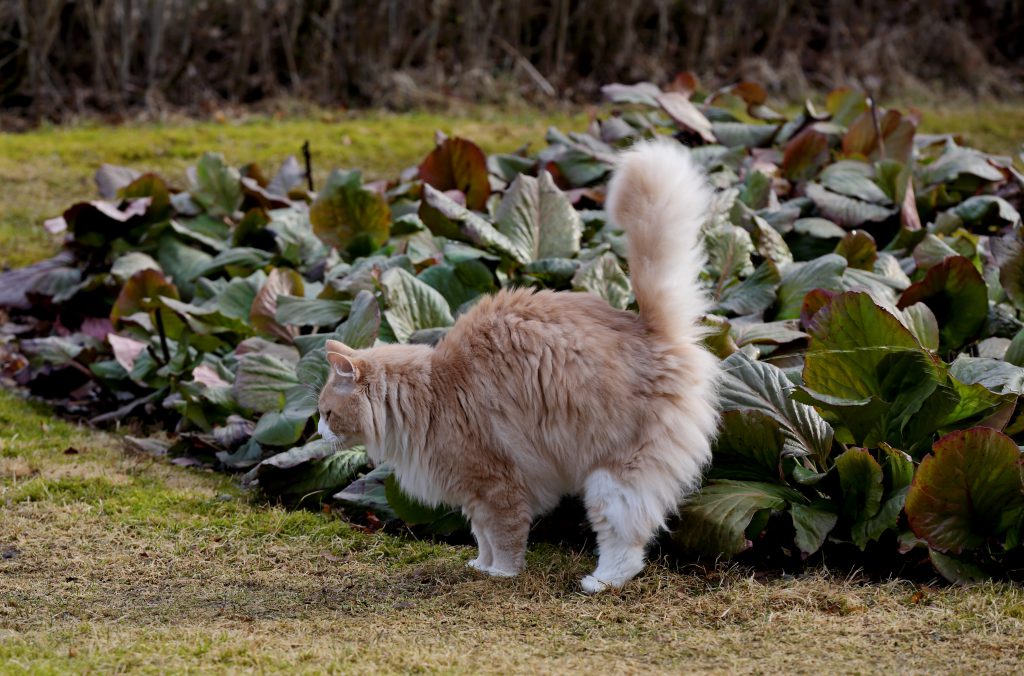
Your cat pees in the house because of a behavioural problem
Does your cat urinate or spray in the house and has your cat been declared healthy by the vet? Then your cat might also have a behavioural problem. Cats are very sensitive and can suffer from stress. And stress is the biggest cause of a behavioural problem in cats. Below is a list of things that can stress cats:
- Have you moved or renovated your home? Then your cat has lost its scent in the house and wants to mark its territory again by spraying. You can prevent this by putting down some familiar things that still have his scent. Like a blanket, basket or scratching post for example.
- A new pet in the house can cause stress. But so can the arrival of a baby. Therefore, always let your cat get used to the new inhabitant at a steady pace and make sure your cat has room to withdraw. And, of course, never forget to give your cat enough love and attention!
- Cats are creatures of habit. They like everything to be in a familiar place and their owner to have a fixed routine. Do you change either of these things? Then your cat could get upset and start peeing in the house. The solution? Don’t change too much at once and let your cat get used to new things.
- Another cat in the garden or in the street can also cause stress. The newcomer invades your cat’s territory and your cat feels threatened. And he may feel the need to mark his territory with a puddle. Unfortunately, there is not much you can do about this. All you can do is wait for it to pass, clean the peeing areas and try to keep the other cat out of the garden.
- Holidays can also be stressful for cats. You are away from home for a long time or your cat has to go to a shelter. All changes that cats do not like. The best solution is to leave your cat at home (in its own environment) and to arrange for a sitter who knows and trusts your cat.
The cause of stress in cats is not always easy to find. Have you tried everything and can’t find out what is upsetting your cat? Then call in a behaviourist, who can help you.
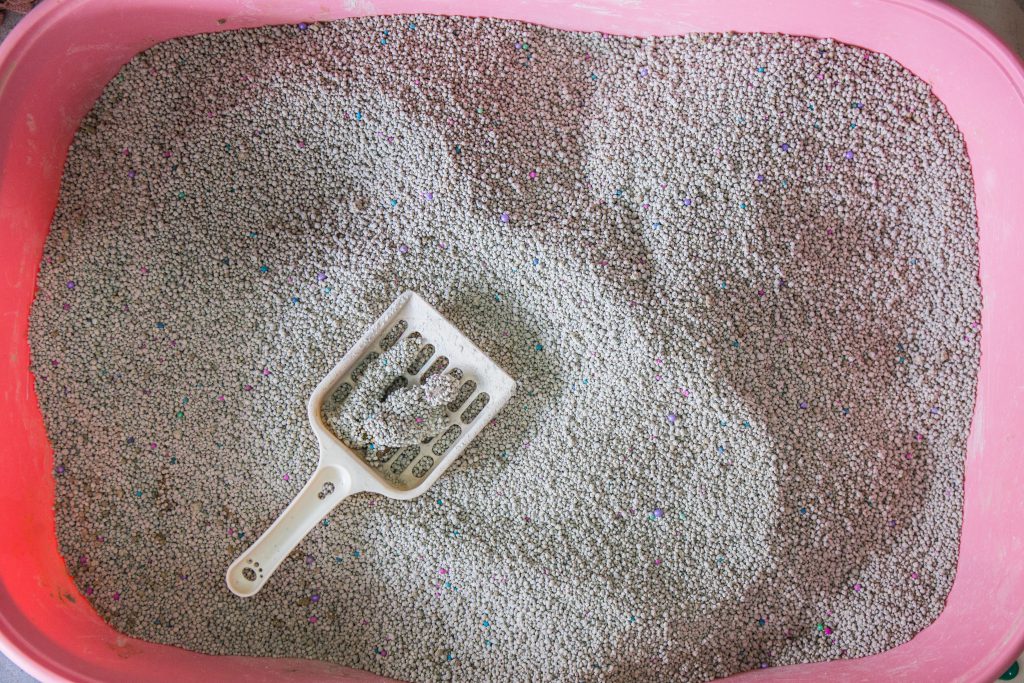
Your cat pees in the house because something is wrong with the litter box
Your cat may also urinate in the house because there is something wrong with the litter box. Cats are very choosy and find many things important about their toilet.
Here are 4 handy litter box tips!
1. Make sure there are enough litter boxes in the house
A cat never poops and pees on one litter box, so every cat needs at least two litter boxes. Do you have more cats in the house? Then you need more litter boxes. You can read here how many litter boxes you need for each cat.
- 2.Choose good and lumpy cat litter
Cats like to bury their needs and the litter box should be fresh and clean. So always choose good and fine bentonite cat litter (for example, unscented). Cats can dig in it, it forms nice clean lumps and it absorbs bad odours.
- 3. The litter boxes must always be clean
It is important to keep all litter boxes clean. Therefore change the litter boxes every week and clean them with all-purpose cleaner, bleach (rinse well!) or boiling water.
- 4. The litter box must be large enough
Large and heavy cats are not happy with a litter box that is too small. Then they can’t move around properly and defecating or urinating is not pleasant. Always adjust the size of the litter box to the size of your cat.
Lid or no lid/door?
Not every cat likes a covered litter box (with a lid), so look carefully at what your cat likes. And be sure to let him try both types. The doors of litter boxes are actually only made for the owners – cats themselves will never be happy with such a rattling door in the litter box. So get them out of there immediately.
The litter box should be in a quiet place
Just like us, cats like to toilet in peace. Never put the litter box in a place where you often walk past or where children play. But rather put the litter boxes in a quiet place. And never put them next to each other, but in different places in the house.
Low step for older cats or cats with osteoarthritis
When cats are older they – like people – become stiffer or suffer from arthritis. A litter tray with a normal entrance can be difficult for them – it is often too high and causes them pain. Is your cat older or less mobile? Then always choose a litter box with an extra low entrance.
Find out why your cat pees in the house and how to fix it
Disclaimer: Petrebels is not a vet or a behaviourist: all content, information and tips on this blog are meant to inspire you and are informative only. Does your cat have complaints or problems and do you doubt the health of your cat? Always go to the vet or a behaviourist.
